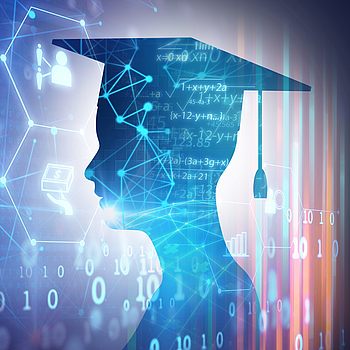Frau Shohreh Kia hat ihre Masterarbeit an der TU Clausthal erfolgreich abgeschlossen. Das Thema ihrer Arbeit lautet: “ Digitalizing a Barrier-Eddy-Current Separator to Optimize the Separation Parameters Using Image Processing“.
Abstract:
It is expected that industrial production processes will be widely automatized. Process automation is using data, for instance, from sensors like a photoelectric barrier or ultrasonic distance sensors.
Besides these conventional sensors, optical camera sensors are increasingly used. This is the result of the possibilities of the development of image processing tools that make it possible to extract much information from an image and due to high-speed computer systems even out of live videos. Compared to industrial production processes (e.g., the automotive industry), recycling processes are only insufficiently digitized mainly because there are few practical solutions for recycling processes. One problem that occurs when separating fine grain sizes is the low throughput. Dry separation machines can achieve good separation results with low throughput in the acceptable particle size
range. By increasing the throughput, the efficiency of the separation process can suffer significantly when reaching a specific throughput. To work economically, separation machines are usually run as close as possible to the "tipping point" between sound quality and maximum throughput. However, fluctuations in the feed can cause it to
exceed the optimum operating point, and in the worst case, the fractions produced must be reseparated. At this point, digitization can effectively contribute to parameter, machine, and process monitoring. Digitization in this thesis means installing camera optical recognition systems, which monitor the separation process with the help of image processing. The information drawn from the images/videos, like the number of particles (or mass throughput), the particle size (variation in the input material) and impurities/non-process substances (defects in upstream crushing, classification, and separation processes), can be used to regulate and control a process. In addition, this data can be supplemented with machine parameters by other sensors (current, speed, etc.) to create a big picture. With the help of the data, the machine can run autonomously to a certain extent, and remote maintenance and control can be made possible.

